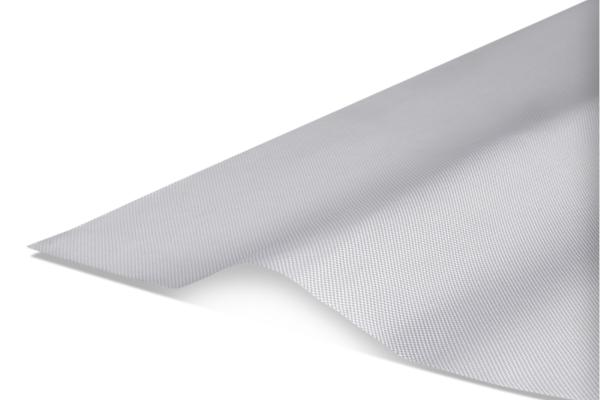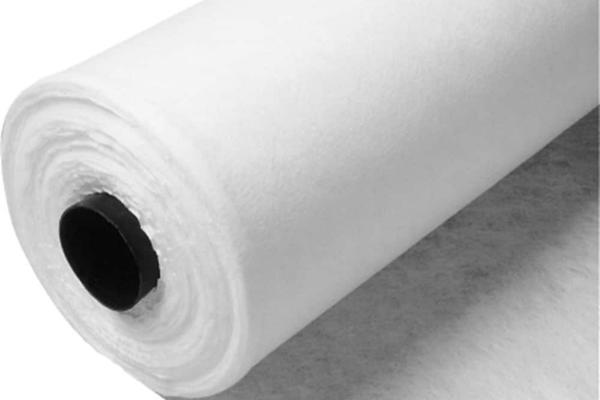Since you have come here having the question in mind, “What is the difference between a woven and nonwoven geotextile’’, you certainly have an idea about geotextile. Still for a better understanding, synthetic permeable textile material, geotextile is used to develop the properties of the soil. It can separate, filter, reinforce, protect, or drain.
When examining material parameters, it might be difficult to distinguish between woven and nonwoven geotextiles. In general, nonwovens have higher flow rates and permittivity while wovens often have higher strength values.
Starting with elongation is the simplest approach to tell the difference between the two materials.
Woven Geotextile

Woven geotextiles are created by weaving together fabric strips to provide strength and stability for the project that calls for geotextiles. Polypropylene strips that can resist a lot of tension are used to weave geotextiles. Because they are almost impermeable, they are perfect for separation and reinforcing reasons.
The most popular type of material used to create woven geotextiles is a weave or yarn blend. The materials have a plastic-like appearance, and only a close examination reveals the weaving. These fabrics serve as a means of separation and improve soil tensile strength. They have better tensile strength because the yarn strength of their warp is substantially higher. It can therefore support a lot more weight.
Woven geotextiles come in a variety of forms, including monofilament, multifilament, slit-film monofilament, and multifilament.
Application of Woven Geotextile
Woven geotextiles can be used in a variety of different applications. As previously mentioned, you need to make sure you are using the right material for your project. Woven geotextiles extend the life of your project, lower long-term maintenance costs, and provide better performance when they are properly specified and installed.
The following are some uses for woven geotextiles:
- Interstates
- Residential streets
- Parking garages
- Below driveways
Nonwoven Geotextile
The non-woven geotextiles are made from either continuous filament yarn or short-staple fibers. The fibers are usually bonded using thermal, chemical, or mechanical techniques, or by combining two or all of the methods. The geo-fibers obtained from mechanical or thermal techniques usually have a thickness of 0.5 to 1 mm, while chemically bonded non-woven geotextiles are thicker by up to 3mm.
They are used mainly for separation, protection, and filtration purposes in the areas of roadway, railroad, landfill, or civil and environmental projects. The manufacturing method uses a process with endless filaments to ensure the use of high-quality materials. Non-woven geotextiles are resistant to all chemicals and biological media occurring in the soil and construction materials.
The material cannot be dissolved by water, making it safe for groundwater. They are also equipped with U-stabilizers to provide extended resistance to direct sunlight. Although the tensile strength of nonwoven geotextiles is not very high, they outperform other materials in terms of separation, drainage, and filtration. Non-woven geotextiles are synthetic fiber-based permeability geosynthetics.
Geotextiles made of non-woven materials can also be bonded chemically and thermally. Nonwoven geotextiles come in a variety of forms, including resin bonded, continuous filament heat bonded, continuous filament needle punched, and staple needle punched.
Application of Nonwoven Geotextile
The greatest option for permeability and soil separation is nonwoven geotextiles. If you are working on a project that needs drainage, they are also the ideal answer. It is a great option for particular tasks even if it might not be as sturdy as a woven geotextile. So, when working on a project, you should be aware of the appropriate geotextile.
The following are some uses for nonwoven geotextiles:
- Rock riprap revetment beneath
- French drain wrapping
- When combined with different subsurface drainage techniques
- For tasks requiring soil permeability and separation
What Is the Difference Between a Woven and Nonwoven Geotextile
Understanding what is the difference between a woven and nonwoven geotextile can help you select the ideal geotextile fabric for your project. In general, non-woven geotextiles have higher flow rates and permeability while woven geotextiles have higher strength values. Nonwoven geotextiles are good for filtration, separation, and drainage purposes, whilst woven geotextiles are a wonderful choice for reinforcing and stability applications.
While nonwoven geotextiles are often measured by weight, woven geotextiles have a higher load capacity and tensile strength and are frequently employed in the construction of roads. With a few notable exceptions, woven geotextiles are semi-impermeable and have a low flow-through rate, whereas nonwoven geotextiles have a high flow-through rate and are permeable.
Non-woven materials have a fuzzy appearance and feel, whereas woven fabrics have a plastic-like appearance. Woven geotextiles are constructed using a film or loom while woven geotextiles are constructed using a film or loom. Nonwovens are identified by weight, often grams per square meter, whereas wovens are identified by tensile stress.
Woven fabrics are tougher and more durable than non-woven fabrics because they are woven by thread crossing, which generates a strong reinforcement. Weaved materials are rarely stated in terms of weight because, regardless of weight, they are frequently employed to create strength and separation. On the other hand, non-wovens frequently have their weight indicated.
The weight of a non-woven geotextile in modern technologies is frequently lower than the weight of a woven geotextile due to the different production methods. Elongation of non-woven geotextiles will be larger than 50% compared to woven geotextiles (between 5 percent and 25 percent ).
Because they can be produced more quickly, non-woven fabrics are typically more economical than woven fabrics, which are more expensive to create and require more time to make. While non-woven geotextiles are made using a unique technique called the stitching method and a sequence of barbed needles to give them a non-woven and felt-like look, woven geotextiles are woven and manufactured by industrial weaving machines.
Conclusion
As you know what is the difference between a woven and nonwoven geotextile now, you know which one is better for you. Also, you can fathom the importance of geotextile in road construction. So, emphasis should be put on.
When selecting the ideal fabric for your geotextile installation, it’s crucial to keep all of these factors in mind. Make sure you are utilizing the appropriate sort of geotextile for your project, depending on what it is.


